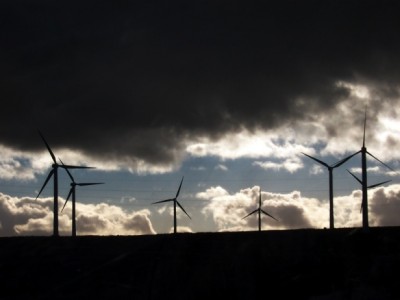As of the end of 2009, according to the China Renewable Energy Industries Association, more than 10,000 utility-scale wind turbines had been installed nationwide. And in 2010, according to figures released last month by the China Industry Energy Conservation and Clean Production Association, China spent approximately $US 45.55 billion on 378 big wind power projects, including roughly 8,000 new wind turbines that were installed last year. Wind generating capacity in China has reached more than 42 GW — the most of any country, according to the Global Wind Energy Council.
The industry is growing so fast, in fact, that China’s two national transmission companies are not keeping pace. About a quarter of the generating capacity is not connected to the grid.

That’s not the case in northern Gansu, where brand new, high-voltage power lines and towers — gleaming silver in the bright sun — march along the mountain ridges and across the desert.
The sector grew steadily — albeit slowly — for nearly a decade, said executives here in Jiuquan. But, in the earliest years of the new century, wind power began to spin with economic authority.
Last year, China said it was spending $US 590 billion over the next decade to expand and modernize its electrical transmission system, including $US 75 billion in the first five years for high-voltage power lines — like those being constructed through Gansu.
Even in Gansu’s bitter cold winter, powerline workers trudge through the big wind farms, connecting turbines to the substations and 750-kilovolt transmission lines that carry power to the rest of the country.




